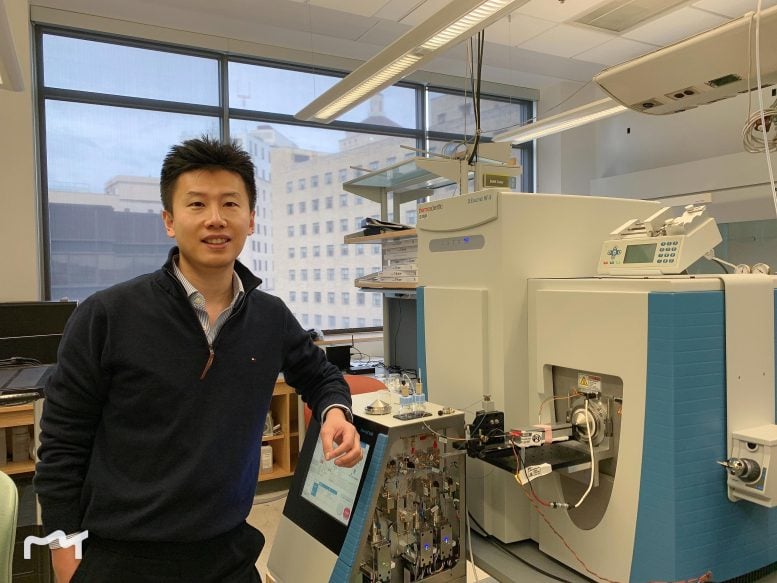
Yi Shi is an assistant professor of cell biology at the University of Pittsburgh School of Medicine. Credit: UPMC
Near-Atomic Look at Three Ways To Thwart SARS-CoV-2 Variants
SARS-CoV-2 nanobodies—microscopic molecules developed at the University of Pittsburgh School of Medicine that neutralize the virus in animals—are remarkably active against mutations found in variants, including Delta, according to new research by Pitt and Case Western Reserve University scientists.
The findings, published on August 3, 2021, in Nature Communications, describe three different mechanisms by which the nanobodies disarm the virus, blocking it from infecting cells and causing COVID-19. The near-atomic-level structural analysis provides guidance for the development of future vaccines and therapeutics that may work against a wide variety of coronaviruses—including variants not yet in circulation.
“This is the first time anyone has systematically classified ultrapotent nanobodies based on their structure,” said senior author Yi Shi, Ph.D., assistant professor of cell biology at Pitt. “By doing this, we’ve not only provided details on the mechanisms our nanobodies use to defeat SARS-CoV-2, but also revealed directions for how to design future therapeutics.”
Late last year, Shi and his team announced that they’d extracted tiny, but extremely powerful, SARS-CoV-2 antibody fragments from llamas, which could be fashioned into inhalable therapeutics to prevent and treat COVID-19. Since then, preclinical studies have verified that the potent nanobodies prevent and treat severe COVID-19 in hamsters, reducing virus particles in their respiratory tracts by a million-fold compared to placebo.
In this latest study, Shi partnered with Pitt structural biologists Cheng Zhang, Ph.D., and James Conway, Ph.D., as well as pharmacologists, structural biologists and biochemists at Case Western Reserve, to use high-resolution cryoelectron microscopy to observe exactly how the nanobodies interact with the SARS-CoV-2 virus to stop it from infecting cells and discover how mutations found in variants may affect nanobody interactions.
“Cryoelectron microscopy has been demonstrated many times to be an extremely useful tool to see high-resolution structural information,” said co-senior author Wei Huang, Ph.D., research scientist in the Department of Pharmacology at the Case Western Reserve School of Medicine. “And nanobodies are versatile and stable biologics that can be used in other research, such as cancer.”
The team selected eight potent nanobodies for further examination. First, they confirmed through observations that several of the nanobodies work against Alpha (a variant associated with the U.K.), Delta (which is associated with India) and several other SARS-CoV-2 variants of concern.
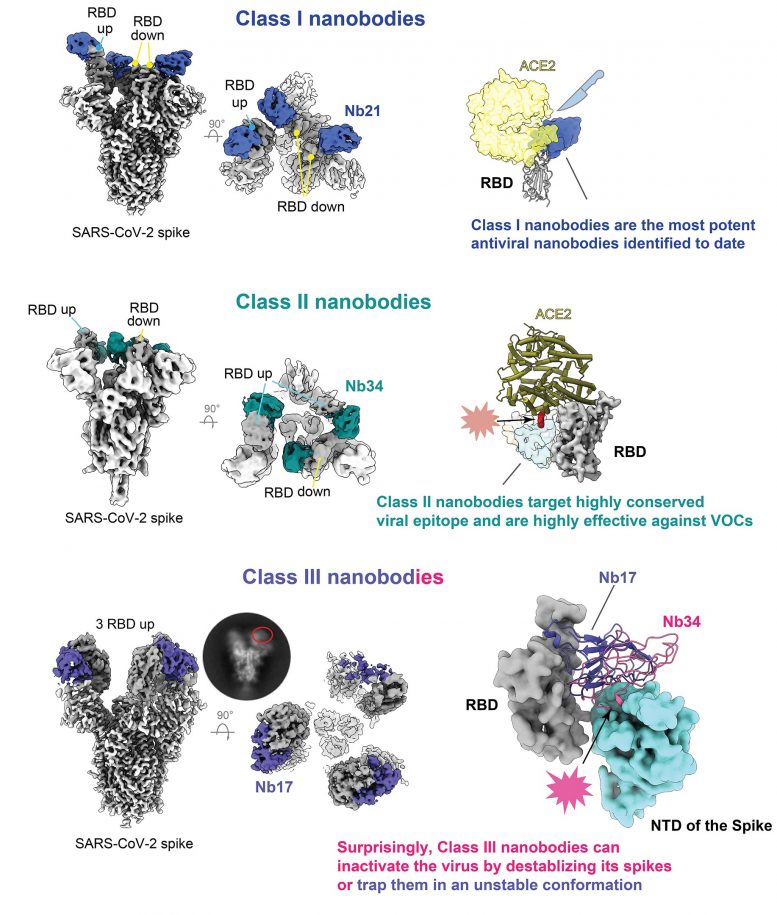
The first systematic classification of ultrapotent nanobodies reveals that the microscopic molecules work against SARS-CoV-2 in three ways. Credit: CWRU
They also classified the nanobodies into three main groups based on how they interact with the spike proteins, which are the protrusions that encircle the spherical coronavirus and act as “keys” that grant the virus entry to human cells:
- Class I outcompetes the part of the human cell that the spike protein binds to, preventing the virus from gaining entry to cells.
- Class II binds to a region on the spike protein that has persisted through several permutations of coronaviruses—including the original SARS-CoV-1. This means it may neutralize SARS-CoV-2 and its variants, but also other coronaviruses.
- Class III latches on to a specific region of the spike protein that larger antibodies cannot access. By binding to this area, the nanobody prevents the protein from folding in the way it needs to for entry into human cells.
“Describing all these vulnerabilities and ways to thwart SARS-CoV-2 and coronaviruses in general has huge potential,” said Shi. “It will not only help our team select and refine nanobodies to treat and prevent COVID-19, but it also may lead to a universal vaccine, preventing not just COVID-19, but SARS, MERS, and other diseases caused by coronaviruses.”
Reference: “Potent neutralizing nanobodies resist convergent circulating variants of SARS-CoV-2 by targeting diverse and conserved epitopes” by Dapeng Sun, Zhe Sang, Yong Joon Kim, Yufei Xiang, Tomer Cohen, Anna K. Belford, Alexis Huet, James F. Conway, Ji Sun, Derek J. Taylor, Dina Schneidman-Duhovny, Cheng Zhang, Wei Huang and Yi Shi, 3 August 2021, Nature Communications.
DOI: 10.1038/s41467-021-24963-3
Additional authors on this research are Dapeng Sun, Ph.D., Yong Joon Kim, Yufei Xiang, Anna K. Belford and Alexis Huet, all of Pitt; Zhe Sang, Ph.D., of Pitt and Carnegie Mellon University; Tomer Cohen and Dina Schneidman-Duhovny, Ph.D., both of The Hebrew University of Jerusalem; Ji Sun, Ph.D., of St. Jude Children’s Research Hospital; and Derek J. Taylor, Ph.D., of Case Western Reserve.
This research was supported by National Cancer Institute contract HSSN261200800001E, National Institutes of Health grants R35 GM137905, R35 GM128641, K99 HL143037, R01 GM133841 and R01 CA240993, Pitt’s Clinical and Translational Science Institute, the American Lebanese Syrian Associated Charities and the Israel Ministry of Science and Technology.

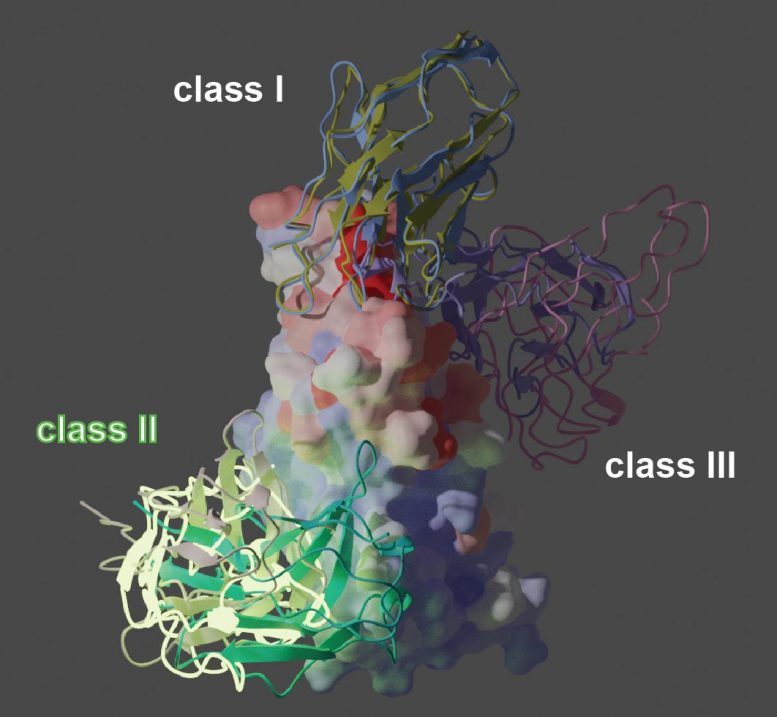
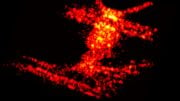
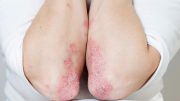

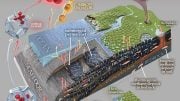



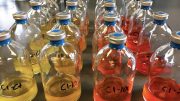
These nanobodies look to be a much more effective way to stop the virus spike from entering a cell. But they’re still just blocking the spike.
All the variants have different spike proteins, with Delta having one that’s more efficient at getting around the vaccines. But the real problem is in the virus and why two of the most dangerous, MERS and Covid-19, are so infectious. My independent research has found multiple one-in-a-million nucleotide sequence matches between all the coronaviruses and the human genome. Those sequences are the same as some of the DHU loops of human tRNA. Using those loops and their anticodon matches, viruses may be able to fool the nucleus membrane in cells to allow the virus to enter and associate with the human DNA, creating more opportunities for further infection. Our immune system may be compromised and may no longer be able to stop the virus and other diseases from attacking organs throughout the body. Vaccines that attack the virus protein shells while ignoring their contents are doomed to failure from the Darwin effect, but recognizing these DHU loops suggests a possible approach to successful coronavirus vaccines. For MERS, eliminating the nucleotide sequence CAGTGGTAG from the virus may make it less infectious and stimulate the body to create antibodies to attack the entire virus. And eliminating the nucleotide sequence TAGTGGTGAG from Covid-19 may do the same thing. Only the infection process is considered in my work, not the innate virulence of the virus. For more info, check out this YouTube, Coronavirus – Using Your DNA Against You. https://www.youtube.com/watch?v=pd4OD4GpsJI